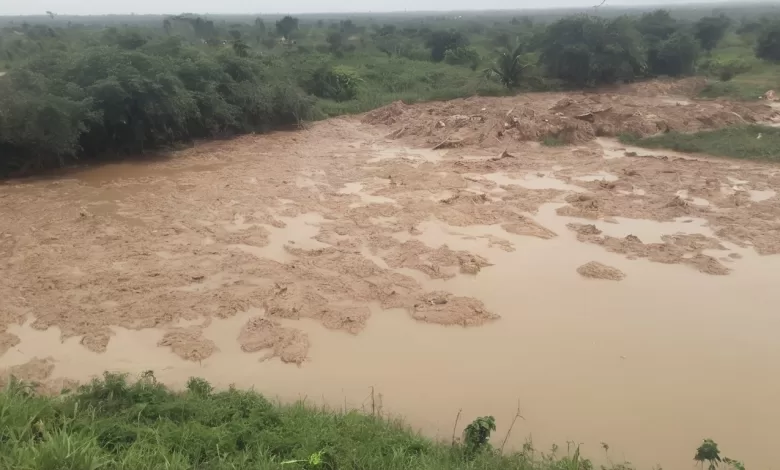Ashanti Region in Crisis: Galamsey Threatens Future Generations

- Galamsey rapidly spreading in Ashanti Region, affecting 25 out of 43 districts.
- Destructive mining practices causing severe environmental damage.
- Contaminated water and destroyed farmlands threaten future generations.
- Multi-pronged approach needed to tackle galamsey, including stricter enforcement and community engagement.
The Ashanti Region of Ghana continues to be a hotspot for galamsey, the devastating practice of illegal small-scale gold mining. Despite efforts to curb the activity, a recent address by Ashanti Regional Minister Simon Osei Mensah revealed that 25 out of the region’s 43 districts are now affected, with the spread showing no signs of stopping. This rampant galamsey poses a severe threat to the environment and the well-being of future generations.
One of the most concerning aspects of galamsey is the destruction of land. Galamsey operators leave behind vast swathes of scarred earth, filled with deep pits and ravaged by excavators. A recent visit by the Minister for Lands and Natural Resources to the Amansie Districts exposed a shocking landscape of widespread devastation. This destruction not only eliminates fertile farmland but also disrupts ecosystems and contributes to soil erosion.
The water sources of the Ashanti Region are also under siege from galamsey. Pollutants like mercury and cyanide used in the mining process seep into rivers and streams, rendering them unusable for drinking and irrigation. The Oda River Forest Reserve, a designated red zone due to its environmental importance, has been a target for galamsey operators, with reports of heavy pollution in the surrounding water bodies. These contaminated sources pose a serious health risk to local communities and threaten the future availability of clean water.
The dangers of galamsey extend beyond the environment. Unsafe mining practices lead to frequent accidents, with the 2009 Dompoase mine collapse, which claimed the lives of 18 people, serving as a tragic reminder. Additionally, the influx of galamsey operators often disrupts the social fabric of communities, leading to increased crime and social tension.
The fight against galamsey requires a multi-pronged approach. Stricter enforcement measures are crucial to deter illegal mining activities. Investing in sustainable and legal mining practices can provide a safer and more environmentally friendly alternative for local communities. Finally, raising public awareness about the dangers of galamsey is essential to garner support for its eradication.
The future of the Ashanti Region hinges on effectively tackling galamsey. The environmental damage and health risks associated with this illegal practice pose a serious threat to the well-being of current and future generations. By prioritizing environmental protection and sustainable development, Ghana can safeguard its natural resources and ensure a brighter future for the Ashanti Region.






